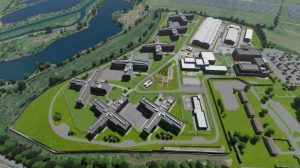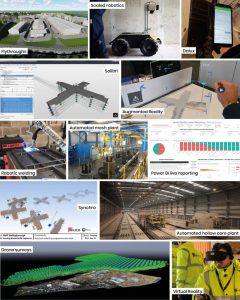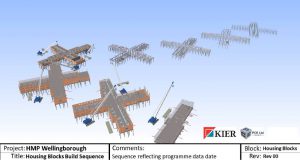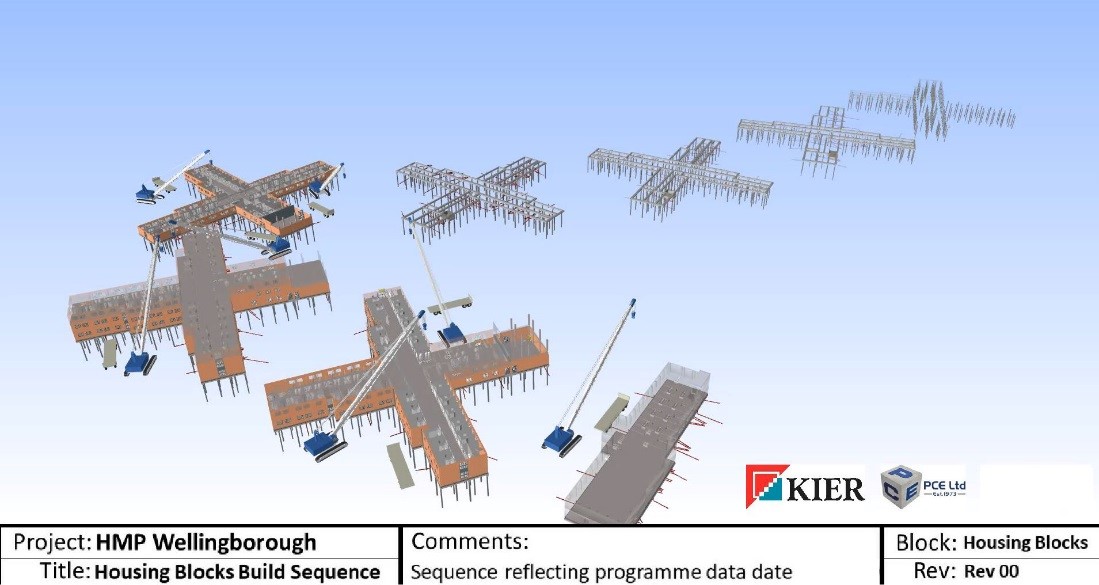At Kier, digital tools are fundamental to the success of our offsite manufacturing approach. BIM and Modern Methods of Construction go hand-in-hand with the Government’s aims of reducing costs through increased productivity and advanced data management.

Nowhere is the success of this approach more evident than our new build prison at Wellingborough for the Ministry of Justice. This vast £253m project is implementing a DfMA approach, incorporating over 60,000 repeatable, standardised components, assemblies and sub-assemblies across the site. BIM and digital is front and centre, helping us improve as we take learnings from this flagship digital scheme and apply its successes to other projects.
To give an idea of scale, over 6 million pieces of data were collected and validated in the model during RIBA 5/6. The project will create approximately 94,800 GB data and has a DfMA library of over 3,000 components. Approximately 6,212,812,800 IBM desktops would be required to process this amount of data!

Due to the extent of prefabrication, the design was fixed much earlier to allow for manufacture. Using Solibri and BIMCollab for design co-ordination has been essential; allowing each discipline to collaborate efficiently and seamlessly in a digital environment, sharing data, coordinating each other’s design and progressively populating the model over the project lifecycle. The level of detail we achieved using digital tools informed our strategy for developing the precast moulds, installation programme, strategies for lifting and the integration of other components including 11-metre-high prefabricated risers.

At Wellingborough we are trialling cutting-edge technologies, fully engaging with our team, supply chain, partners and client to provide tangible benefits in terms of cost, programme, predictability, quality, safety, productivity and end-user experience. Wellingborough is the first Kier scheme to have a project-dedicated data analyst; generating live reporting via PowerBI for better project understanding and business-wide application. All six precast factories are using Dalux to log their QA; enabling us to control quality and track progress. We used Virtual Reality with our client to review resident flows and room layouts, and Augmented Reality to test virtual inductions and method statements. Synchro has allowed us to effortlessly ascertain the impact of decisions and communicate this through 4D visualisations.



We deployed drones for site surveys and have scheduled Scaled Robotics ‘rovers’ to autonomously scan buildings; capturing build progress and accuracy. SolidWorks and robotic welding are being used to design and assemble steel reinforcement for the precast components, as well as the subframe for the innovative barless windows and door leaves that will help create an environment conducive to rehabilitation.
Key achievements
- Live data management and reporting
- Extensive supply chain integration
- Quality throughout the lifecycle of the project, including shared learning


